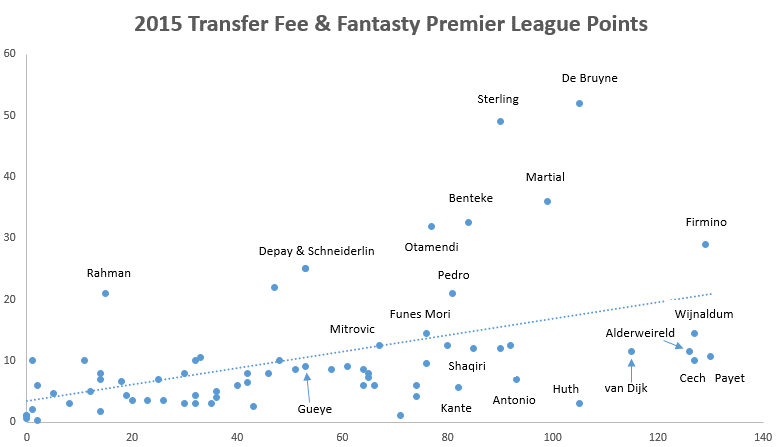With the 2015-2016 Premier League entering the final two months, a clearer picture is now starting to emerge of each club's performance. Incredibly, Leicester City (5000-1 shots at the start of the season) continue to lead the race for the title and the market now prices them as short as 11-10 to lift the Premier League trophy. As late as Christmas 2015, finishing in the top four would still probably have been viewed by many as an over-achievement for the Foxes.
While Leicester have far exceeded expectations they are not alone. West Ham United are very much in the hunt for Champions League qualification. In fact, had it not been for Leicester's remarkable season, it is likely West Ham would be getting far more attention for their excellent performance to date. Other clubs to exceed expectations this season probably include Tottenham and Stoke City.
At the other end of the spectrum, the big underachievers include the likes of Newcastle United, Everton, Aston Villa and Manchester United. All of these clubs probably thought they would be better off at this point in the season. However, no under-performance has been quite as dramatic as Chelsea. The current champions will do well to reach 7th place, the joint worst performance by a defending EPL champion (Blackburn 1995-1996, and Manchester United 2013-2014).
So how might we explain these performances?
One way is to consider the summer 2015 Transfer Window and assess how productive were each club signings. The key to this measure is capturing the relationship between productivity and transfer fee. Generally in economics, productivity is used as a measure of performance. When it comes to footballers the official Fantasy Premier League can help us out.
I previously wrote about the site here and here. Each week players are assigned a performance value based on that round of fixtures. Points are awarded for goal scored, assists, clean sheets, saves, etc. Points are deduced for goals conceded, cautions and red cards. The weighting of each is based on the players position (e.g. defenders are awarded more points for scoring than strikers). On balance, it appears attacking players find it easier to accumulate points, and this is one small quirk in this analysis. However, a closer look at seventy-four observations for which transfer fee data is available during summer 2015 provides some interesting results. The number of fantasy football points is measured on the X-axis while the transfer fee, in millions of pounds sterling, is measured on the Y-axis.
Some of the best buys in the Summer 2015 window include Dimitri Payet, Petr Cech, Toby Alderweireld, Georginio Wijnaldum, Virgil van Dijk, and Robert Huth (who has scored 105 points and cost just £3 million). West Ham's resurgence can be explained by the excellent performance of not just Payet but also Michail Antonio (93 points), N'Golo Kante (82 points) and Angelo Ogbonna (64 points) who all appear below the trend line, and cost just £7 million, £5.6 million and £8.5 million respectively.
At the other end, the over-valued/under-performing stars include Chelsea's Baba Rahmen (£21 million and 15 points) and both Manchester United signings Memphis Depay and Morgan Schneiderlin. Both cost £25 million and have accumulated an identical number of Fantasy Premier League points (53). Aston Villa's Idrissa Gueye has also amassed 53 but cost just £9 million pounds last summer.
Manchester City unsurprisingly paid the most for any player. However, the £52 million the club spent on Kevin De Bruyne looks out of line when compared to Robert Huth's 105 points and £3 million fee. Other expensive purchases include Rahmen Sterling, Anthony Martial and Christian Benteke. Firmino, while currently over-priced is moving closer to Payet and more good performances might see the Brazilian become relatively good "value-for-money" before the end of the season.

 RSS Feed
RSS Feed